Ikebana is a captivating Japanese art form that offers more than meets the eye. But what is ikebana? Simply put, it’s a carefully curated and thoughtfully designed arrangement of plants, flowers, and branches, reflecting the intricate interplay between humans and nature. It’s not just about creating something beautiful but also invoking a sense of serenity, balance, and profound contemplation.
In this blog post, we will explore:
- The rich history of ikebana, tracing its roots back to the 6th-century Buddhist practice of offering flowers and exploring its evolution over the centuries influenced by different eras in Japanese culture
- The principles and aesthetics of ikebana, focusing on the three main elements: line, mass, and color, and the symbolic meanings of different materials
- Various ikebana styles and schools, providing an overview of styles like Rikka and Moribana, and introducing the most renowned ikebana schools such as Ikenobo and Sogetsu
- The benefits of practicing ikebana, emphasizing its role in mindfulness and self-care practices, improved mental well-being and focus, and a deeper connection with nature
- How to get started with ikebana, covering essential tools and materials, tips for flower selection and arrangement, and ways to connect with local Ikebana events and classes
By the end of this post, you will have a thorough understanding of this exquisite art form and practical knowledge to kickstart your own Ikebana journey.
The Beautiful History of Ikebana
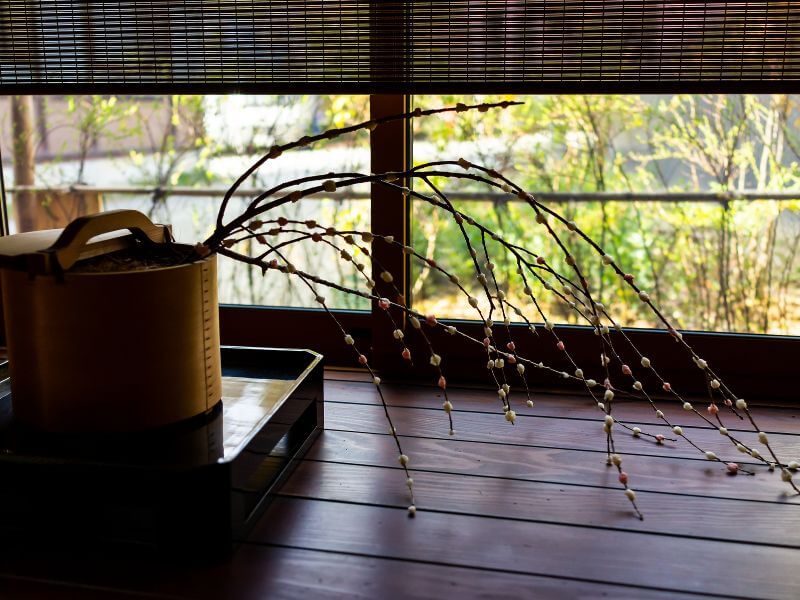
Ikebana, a traditional Japanese art form, is much more than just flower arranging. It’s a disciplined practice that highlights the beauty and vitality of nature through simplicity and minimalism. The history of Ikebana is as intriguing as its aesthetics, dating back to the 6th century.
The Origins
Ikebana, which means “living flowers,” has roots in the Buddhist ritual of offering flowers to the spirits of the deceased. It was introduced to Japan in the 6th century by Chinese Buddhist monks who would make flower arrangements for temple offerings.
Evolution of Ikebana
Over time, this religious ritual evolved into an art form that was embraced by the Japanese aristocracy. By the 15th century, Ikebana had moved from the temple to the imperial court, where it took on a secular character and became a symbol of status and refinement.
The 16th century saw the advent of the first school of Ikebana, Ikenobo. This marked the transformation of Ikebana into a structured discipline with rules and guidelines. The Ikenobo style focused on the triangular flower arrangement of three main elements that represented heaven, earth, and mankind.
Modern Ikebana
By the late 19th century, with the westernization of Japan, Japanese Ikebana underwent another transformation. New flower arrangement styles emerged that reflected Western influences, such as the Moribana style, which incorporates a low, wide dish and emphasizes natural landscapes.
Today, there are over 1,000 schools of Ikebana, each with its own unique approach and philosophy. The Sogetsu School, for example, encourages individual creativity and artistic freedom, while the Ohara School focuses on capturing the beauty of the natural landscape.
Ikebana as a Philosophy
Ikebana is not just about flower arranging; it’s a way of life. It embodies the Japanese philosophy of ‘wabi-sabi,’ which finds beauty in imperfection and transience. Every element of an Ikebana flower arrangement, from the vase and stems to the leaves and flowers, is chosen and arranged with intention. The process of creating an Ikebana arrangement is as important as the final product, requiring patience, mindfulness, and a deep respect for nature.
Asking ‘what is Ikebana?’ leads us into the captivating world of this art form, with a rich history that mirrors the cultural evolution of Japan. From its Buddhist origins to its contemporary interpretations, Ikebana continues to enchant with its philosophy of simplicity, harmony, and respect for nature.
Principles and Aesthetics of Ikebana
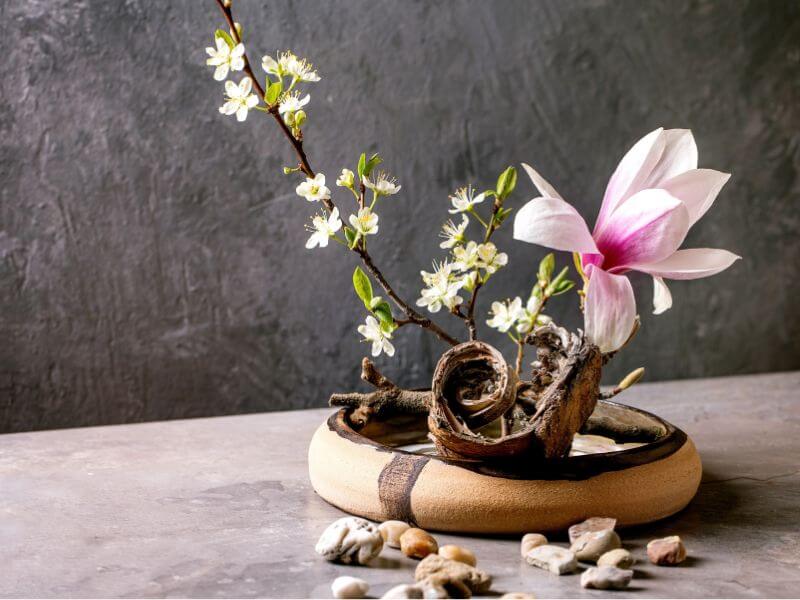
Understanding the principles and aesthetics of Ikebana is crucial to fully appreciate this art of flower arranging. This section will delve into the foundational principles that govern Ikebana arrangements.
Three Main Elements: Line, Mass, and Color
At the heart of Ikebana lie three fundamental elements – line, mass, and color.
The line in an Ikebana arrangement refers to the structural framework, often represented by branches or stems. These lines create a sense of direction and movement, guiding the viewer’s eye through the arrangement.
Mass, on the other hand, is created by the grouping of flowers and leaves. It provides volume to the arrangement and enables the artist to play with the concepts of density and space.
Lastly, color adds an emotional dimension to the arrangement. The chosen hues can evoke different moods and seasons, adding depth and layers of meaning to the composition. It’s not just about vibrancy but also the subtle interplay of different shades and tones.
The Focus on Minimalism, Harmony, and Balance
The aesthetics of Ikebana are deeply rooted in the principles of minimalism, harmony, and balance. Unlike Western flower arrangement, which often emphasizes abundance and variety, Ikebana values simplicity and restraint.
Each element in an Ikebana arrangement is carefully chosen and deliberately placed. The goal is to achieve a harmonious balance between the floral elements and the empty space, creating a composition that feels tranquil and balanced.
This focus on harmony and balance extends beyond the physical arrangement. It reflects the Ikebana philosophy of bringing harmony between nature and humanity and between the inner world of the artist and the outer world of the viewer.
The Symbolic Meanings of the Chosen Materials
In Ikebana, every material holds a symbolic meaning. The types of flowers, branches, and leaves used can represent different seasons, emotions, or philosophical concepts.
For instance, cherry blossoms might symbolize the fleeting beauty of life in spring, while a bare branch could represent resilience in winter. The use of certain materials can also reflect traditional Japanese values like ‘iki,’ a concept that embodies a kind of refined uniqueness.
Ikebana Styles and Schools
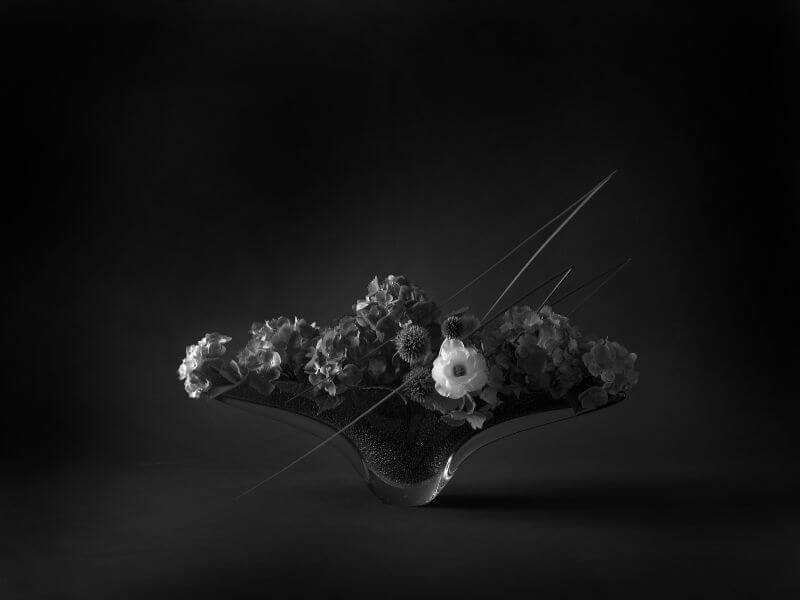
The Famous Ikebana Schools
Exploring what is Ikebana? reveals that there are over 1,000 schools of this art form, each with its unique style and philosophy. However, three schools stand out for their historical significance and influence: Ikenobo, Ohara, and Sogetsu.
Ikenobo School
As the oldest Ikebana school, dating back to the 15th century, Ikenobo is considered the root of Ikebana. It emphasizes the beauty of line, form, and shape in its arrangements. The hallmark of the Ikenobo style is ‘Rikka’ (standing flowers), where flowers and branches are arranged in a vertical, upright manner.
Ohara School
Founded in the late 19th century, the Ohara school introduced the concept of ‘landscape arrangement.’ This style, known as ‘Mori-bana,’ employs shallow containers and focuses on depicting natural landscapes using seasonal materials.
Sogetsu School
The youngest among these three, Sogetsu was established in the 20th century. It is known for its modern, avant-garde approach, allowing for more personal expression. It encourages the use of unconventional materials and believes Ikebana can be created anytime, anywhere, by anyone.
Differences and Similarities Between Ikebana Styles and Schools
Despite originating from the same cultural heritage, each Ikebana school has distinct characteristics that set them apart:
Differences
Ikenobo’s style is formal and structured, adhering to traditional rules and forms.
In contrast, Ohara embraces a more naturalistic approach, capturing the beauty of landscapes in its arrangements.
Sogetsu, meanwhile, breaks away from tradition entirely, promoting individual creativity and modern aesthetics.
Similarities
Despite their differences, all Ikebana schools share some common principles.
They all value simplicity, subtlety, and the thoughtful placement of elements.
Each school aims to create harmony between the materials used, the container, and the surrounding space. Moreover, they all emphasize the spiritual aspect of Ikebana, viewing it as a path for self-reflection and spiritual growth.
The Benefits of Ikebana
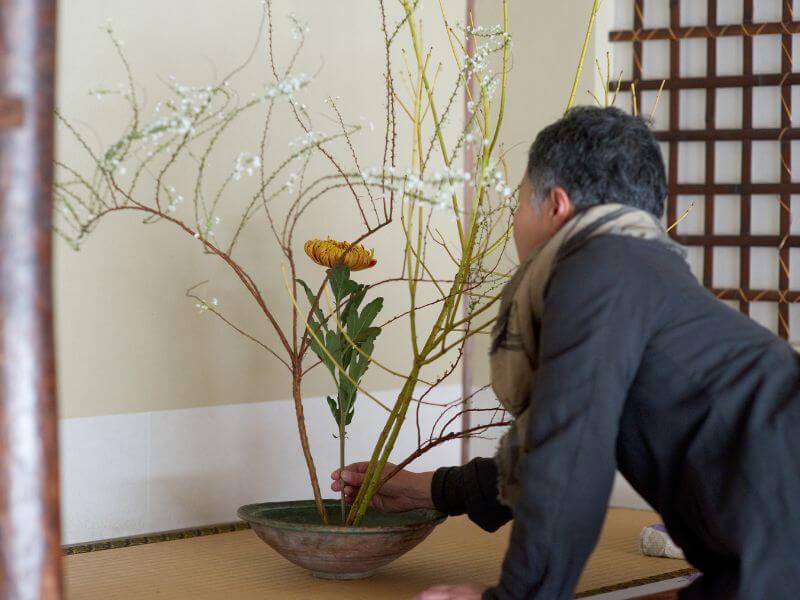
While the aesthetic appeal of Ikebana is clear to any observer, the benefits of this ancient art form extend far beyond the surface.
Engaging with Ikebana not only provides an outlet for creative expression but also offers numerous physical, mental, and spiritual benefits.
This section delves into the ways in which practicing Ikebana can enrich your life, enhance your well-being, and heighten your appreciation for the natural world.
#1 – Therapeutic Benefits
Ikebana can undoubtedly be therapeutic. As you trim the stems, select the branches, and place them in the vase, you are engaging in a process that requires focus, patience, and attention to detail.
It allows us to slow down, concentrate on the present moment, and take a step back from the chaos of the world. In this way, Ikebana can help to reduce stress, anxiety and improve our mental health.
#2 – Creative Outlet
Another benefit of practicing Ikebana is that it provides a creative outlet regardless of skill level.
As you arrange the flowers and greens in various forms, you are tapping into your creativity, allowing yourself to express your emotions and thoughts without words. It becomes a channel for self-expression, and that allows one to create a unique and beautiful piece that reflects their style without judgment or competition.
#3 – Mindful Abundance
In Ikebana, the focus is on using only a few stems to create a miniaturization of nature, representing the idea that less is more. As you work with fewer elements and look at their shapes, colors, and textures, you begin to realize how much beauty is in simple things.
You appreciate the abundance in simple arrangements, and it serves as a reminder to appreciate the beauty around us and in our lives, no matter how small.
#4 – Enhances Focus
Practicing Ikebana demands your full presence and concentration at each stage. You must avoid distractions or rushing your arrangement; it calls for careful positioning and a keen eye for detail.
Engaging in such mindful activities strengthens your mental agility, boosting your capacity to stay focused and attentive. Moreover, it aids you in managing novel, complex tasks with confidence.
#5 – Environmental Awareness
Finally, when we ask ‘what is Ikebana?’, we discover that it inspires us to be more environmentally aware by appreciating the beauty and value of nature. By using nature respectfully, we learn to respect our environment and protect it. Ikebana allows us to have an intimate connection with the natural world, which will help us grow in the mindfulness of our daily actions and choices.
Getting Started with Ikebana
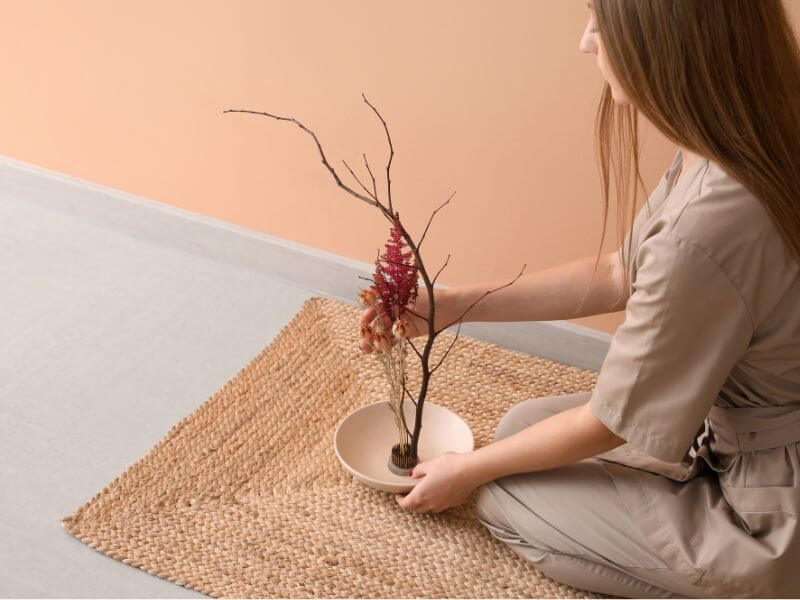
Now that we’ve explored the rich history, various styles, and philosophical underpinnings of Ikebana, it’s time to delve into the practical side of this exquisite Japanese art form.
The following section provides a quick guide to help beginners embark on their journey into the world of Ikebana. From gathering essential tools to attending local classes, here’s how you can get started on this rewarding path of creating your unique floral arrangements.
Step 1: Essential Tools and Materials
Before you start creating Ikebana arrangements, it’s important to gather the necessary tools and materials.
These typically consist of a sturdy vase or container, a Kenzan (a metal flower frog) or a floral foam block, a pair of floral scissors or shears, and a clean cloth to wipe away excess moisture.
Choose a vase that complements the style and size of your arrangement, and opt for floral shears that are not too sharp to avoid crushing flower stems.
You may also need to purchase some supplies, such as wire, tape, or floral pins, depending on the style of Ikebana you choose to pursue.
Step 2: Choosing and Arranging Flowers
Ikebana is all about creating harmonious compositions that balance space and form. This involves selecting just the right combination of foliage and blooms that complement each other and the chosen vase.
Though there are many different Ikebana schools and styles, most arrangements typically consist of a minimal number of branches and flowers arranged asymmetrically to convey a sense of elegance and grace.
You must pay careful attention to the angles and spaces between each stem as well as to the symbolism of each element used.
Step 3: Exploring Local Ikebana Classes, Workshops, and Events
While there are many online resources available for learning Ikebana, there’s nothing like attending local classes, workshops, and events to immerse yourself in the art form.
Most communities have Ikebana societies that host events and workshops for enthusiasts of all skill levels. This provides an opportunity to learn new techniques and styles, mingle with other flower enthusiasts, and gain invaluable feedback and advice from experienced masters.
Attending an Ikebana exhibition can be an inspiring experience that broadens your perspective on the art form and helps you appreciate the subtleties of each arrangement.
Step 4: Practice, Patience, and Perseverance
As with any art form, mastering Ikebana takes time, dedication, and practice.
Don’t feel disheartened if your initial attempts don’t yield the desired results – every arrangement is a learning process that helps you refine your skills and explore new possibilities.
Experiment with different flower combinations, vases, and styles, and don’t be afraid to take risks and think outside the box. With perseverance and patience, you may even uncover your unique style and path within the world of Ikebana.
Wrapping Up: Understanding What Is Ikebana
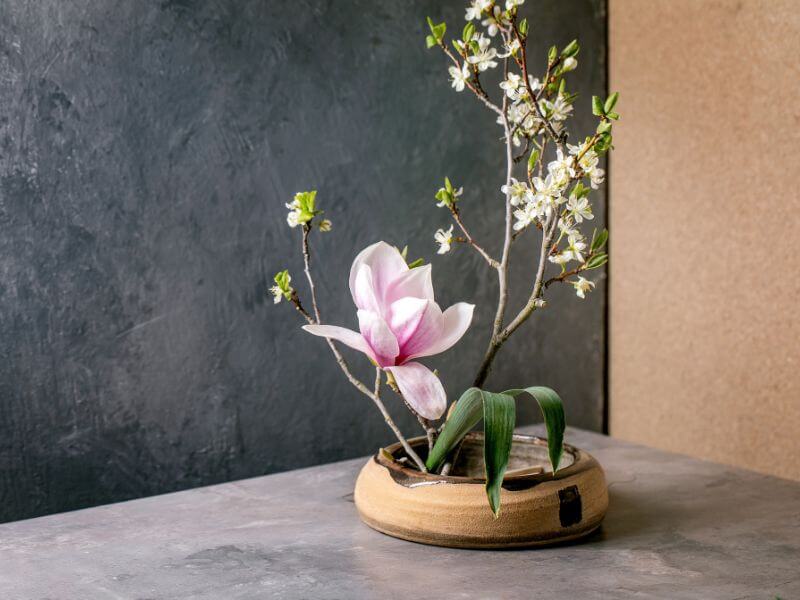
The art of Ikebana offers far more than a simple arrangement of flowers. It’s a pathway to mindfulness, creativity, and a deeper appreciation for the beauty of nature. Like any art, it demands practice and patience, but the rewards it offers make it a journey worth undertaking.
Whether you’re seeking a new hobby, a form of relaxation, or a fresh perspective on nature, you might ask, what is Ikebana? Ikebana could open up a world of possibilities for you.
Don’t hesitate to join a local class or try creating your arrangements at home. Remember, the goal isn’t perfection but the process of connecting with nature and expressing yourself creatively.
For a more in-depth exploration of horticulture, you might find our blog post on the definition and meaning of bonsai interesting.





0 Comments